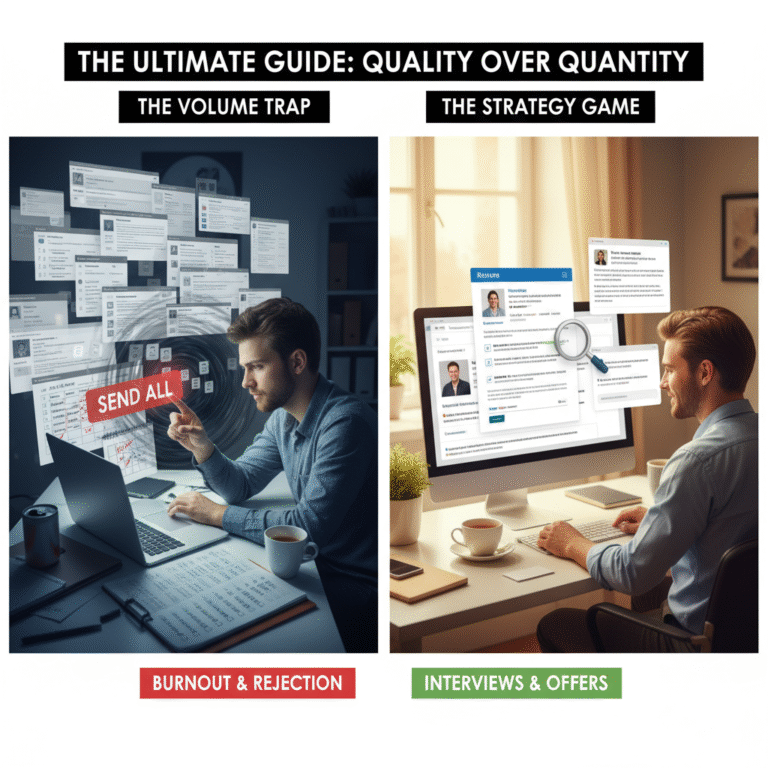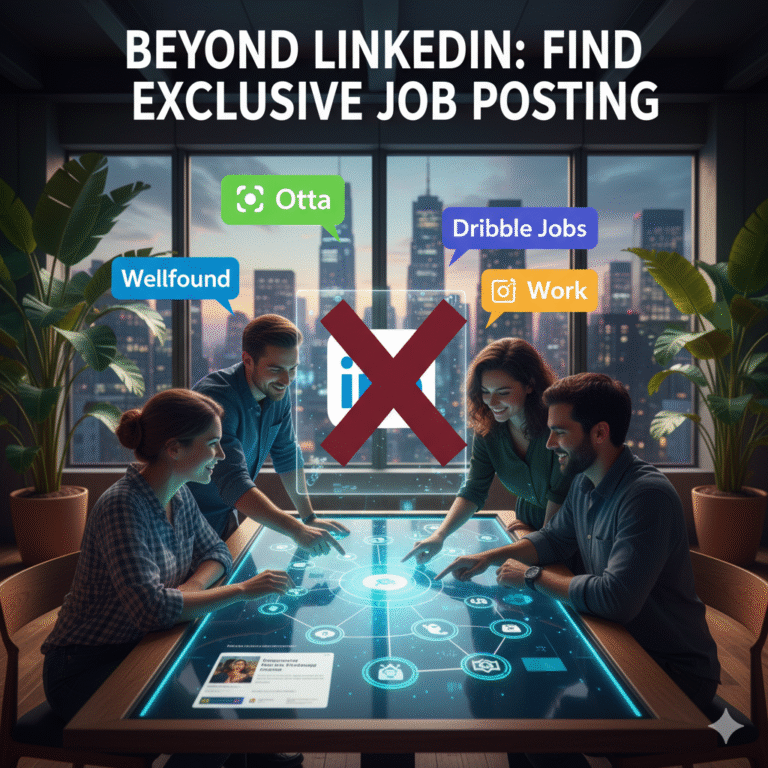Decoding “Cultural Fit”: How to Answer Behavioral Questions and Secure the Job
You’ve done it. You navigated the ATS, your resume impressed the recruiter, and you aced the technical interview. You are qualified. You are skilled. You are in the final round. And then, the hiring manager leans back and asks, “So, tell me about a time you had a conflict with a coworker.”
Your blood runs cold. Suddenly, your hard skills don’t matter. You’ve entered the ambiguous, high-stakes world of the behavioral interview. This is the “cultural fit” test, and it’s where most qualified candidates fail. They get vague, they get defensive, or they accidentally talk themselves out of the job. They don’t understand what’s *really* being asked.
Here is the secret: “Cultural fit” is not about personality. It’s not about whether you like the same hobbies as the team. It is a business assessment. It is the company’s way of asking, “How will you *behave* and *operate* within our specific system?” They are trying to predict your future performance based on your past behavior.
This guide will decode the “cultural fit” test. We will give you a simple, universal framework (the STAR method) and a “translation guide” for the 5 most-feared behavioral interview questions so you can answer them with total confidence and prove you are the perfect hire.
What “Cultural Fit” Really Means (And What It Doesn’t)
What It *Doesn’t* Mean (The Myth)
Most candidates think “cultural fit” means “Will the hiring manager want to have a beer with me?” They think it’s about being friendly, outgoing, or having a “good personality.” This is a dangerous misconception. This line of thinking leads to bias and homogenous teams. Smart companies are actively fighting *against* this. They don’t want a “culture club”; they want a “culture of performance.”
What It *Does* Mean (The Reality)
A company’s culture is its *operating system*. It’s the set of shared values and processes that dictate how work gets done. When they are testing for “fit,” they are asking specific, practical questions:
- Communication Style: Do you over-communicate, or are you silent? Do you prefer Slack, email, or video calls?
- Collaboration: Do you share credit, or do you work in a silo? How do you handle feedback?
- Pace: Do you thrive in a fast-paced, chaotic startup environment, or do you prefer a methodical, stable corporate structure?
- Ownership: When something goes wrong, do you blame others, or do you take responsibility and fix it?
- Alignment with Values: If the company’s core value is “Customer Obsession,” they want to see if you have a history of prioritizing the customer.
The Universal Key: How to Answer Every Behavioral Question (The S.T.A.R. Method)
Never answer a behavioral question with a vague, general opinion. (e.g., “I’m a great team player.”). You must *prove* it. The only way to prove it is with a story, and the only way to tell a story in an interview is with the S.T.A.R. Method. It is your ultimate framework.
S – Situation
Set the scene, concisely. Give the interviewer the context. (1-2 sentences).
Example: “In my previous role as a project manager…”
T – Task
Describe your specific responsibility in that situation. What was the goal or problem you were tasked with? (1-2 sentences).
Example: “…we were approaching a major product deadline, and the engineering and design teams were not communicating, putting the launch at risk.”
A – Action
This is the most important part of your answer. What actions did you (not your team, you) personally take to address the task or problem? Be specific.
Example: “I took two actions. First, I stopped the email chains and set up a 30-minute daily stand-up call with the leads from both teams…”
R – Result
What was the measurable outcome of your action? How did you save the day, fix the problem, or improve the process? Quantify it if possible.
Example: “…By opening up that line of communication, we identified the key bottleneck in 3 days. We re-prioritized two features, and the project was delivered on time.”
This structure turns a weak, rambling answer into a powerful, compelling story of your competence.
Decoding the 5 Most Feared Behavioral Questions
Here is how to apply the S.T.A.R. method to the questions that trip people up the most.
1. “Tell me about a time you had a conflict with a coworker.”
What they’re really asking: “Are you toxic? Do you create drama? Do you blame others? Or are you a professional adult who can solve problems respectfully?”
How to Answer: Your story must have a positive resolution. Never choose a story where the conflict was about “personality.” Choose one about process or priorities.
STAR Example:
- (S) “In my last role, a sales executive and I had a conflict over a new feature.”
- (T) “He promised a client a feature that my engineering team knew was not feasible for the next quarter. He was upset, and my team was frustrated.”
- (A) “I scheduled a 1-on-1 with him. I didn’t argue; I just listened to his client’s problem. Once I understood the *why*, I realized we could solve 80% of the client’s problem with a simpler, existing feature. I wrote up a 1-page solution doc, presented it to him, and he agreed.”
- (R) “The client was happy with the immediate solution, the sales exec hit his quota, and my team was protected from burnout. From then on, the sales exec always consulted me *before* promising new features.”
2. “Tell me about a time you failed.”
What they’re really asking: “Are you self-aware? Do you take ownership, or do you make excuses? What did you learn?”
How to Answer: This is a test of humility. Pick a real failure, but not a catastrophic, fireable offense. Spend 20% of your answer on the failure and 80% on the learning and fix.
STAR Example:
- (S) “Early in my career, I was managing my first big marketing campaign.”
- (T) “I was so focused on the creative and the copy that I failed to properly double-check the audience segmentation for our ad spend.”
- (A) “I launched the campaign, and we spent 15% of our budget on the wrong demographic before I caught it. It was 100% my fault. I immediately paused the campaign, owned the mistake in my report to my manager, and worked all night to re-build the audiences.”
- (R) “While we lost that initial budget, I learned a lesson I will never forget. I implemented a mandatory 3-person ‘pre-launch checklist’ for all future campaigns, which I still use today. That system ensures it never happens again.”
3. “Tell me about a time you disagreed with your boss.”
What they’re really asking: “Do you have a backbone? Will you challenge ideas respectfully, or are you a ‘yes-person’ who will let the team walk off a cliff? Can you disagree and then commit?”
How to Answer: Show that you are respectful but not afraid. You must show that you can argue with data and then, if overruled, fully support your boss’s final decision.
STAR Example:
- (S) “My manager wanted to switch to a new email marketing software because it was cheaper.”
- (T) “I was responsible for our email deliverability, and I knew from my research that this new tool had a poor reputation, which could hurt our revenue.”
- (A) “I asked for 48 hours to build a case. I put together a 1-page report showing that the ‘cheaper’ tool would cost us an estimated 5% in lost revenue from deliverability issues, far outweighing the savings. I presented it not as ‘you’re wrong,’ but as ‘Here is some additional data I found.'”
- (R) “He reviewed my data and agreed. We stuck with our current provider. He thanked me for the research, and it built a lot of trust. (Or: *He reviewed the data but still decided to switch. I said ‘Okay, I’ll do my best to make it a success,’ and I fully supported the migration.*)”
4. “Tell me about a time you had to persuade someone.”
What they’re really asking: “Can you lead without authority? How do you influence people? Do you use data and empathy, or just opinions and volume?”
How to Answer: Show that you understand the other person’s motivations.
STAR Example:
- (S) “I needed the data science team to build a custom dashboard for my marketing team, but they were swamped.”
- (T) “My task was to get this dashboard prioritized, but I had no formal authority over their roadmap.”
- (A) “Instead of just emailing the request, I sat down with the data team lead. I asked him what *his* goals were. He said ‘proving ROI on our projects.’ I then framed my dashboard request not as a ‘marketing need,’ but as a ‘revenue-tracking tool’ that would help *him* prove his team’s value to the CFO.”
- (R) “By aligning my need with his goal, he saw it as a win-win. He slotted it into the next sprint, and the dashboard became a key reporting tool for the whole company.”
5. “Can you describe a high-pressure situation and how you handled it?”
What they’re really asking: “Do you panic and make things worse? Or do you get calm, prioritize, and execute? What is your system for chaos?”
How to Answer: Focus on your process. Show that you are the calm in the storm.
STAR Example:
- (S) “Our main e-commerce site crashed on the morning of Black Friday, our biggest sales day.”
- (T) “As the site manager, I was responsible for getting it back online, but everyone was panicking. Customer service was flooded, and leadership was demanding answers.”
- (A) “I did three things immediately. 1. I established a ‘war room’ on Slack to be the single source of truth, stopping the chaos. 2. I triaged the problem: was it hosting, code, or a DDOS attack? 3. I communicated a 15-minute update interval to leadership so they would stop distracting my team. I focused 100% on the engineers.”
- (R) “By managing the communication and creating a calm, focused process, the team found the bad code push and rolled it back. The site was back online in 45 minutes. We salvaged the day and built a new ‘code-freeze’ policy so it wouldn’t happen again.”
Conclusion: “Fit” Is a Two-Way Street
By preparing your S.T.A.R. stories, you are no longer at the mercy of the interviewer. You have a portfolio of evidence that proves your competence, your self-awareness, and your professionalism.
But remember: You are also interviewing *them*. Listen to the questions they ask and the values they emphasize. If a company’s culture is all about “hustling 24/7” and your value is “work-life balance,” you are not a “bad” candidate, and they are not a “bad” company. You are just a *bad fit*.
Answering behavioral questions is your chance to find a company where your specific way of operating will be valued. Use this framework to find a role where you won’t just survive, but thrive.






